Prototypes
School Contact Prototype Designs are intended to address the following emergency scenarios:
Real-Time Threat Detection: Emergency devices with AI-powered surveillance could instantly detect unusual activity, such as unauthorized entry or sounds of gunfire, and immediately trigger lockdown procedures. This would provide staff and students with early warning and more time to take protective actions.
Automated Lockdown Protocols: These devices could secure all entrances and classrooms automatically, limiting the shooter’s access to different areas of the school. This would enhance the safety measures described in the active shooter scenario.
Efficient Communication: AI-driven voice assistants could enable swift and accurate communication with law enforcement, providing critical details like the shooter's location, description, and actions in real time. This aligns with the need for precise information to be relayed to emergency responders.
Internal Alerts and Guidance: Devices could provide staff and students with step-by-step instructions tailored to their specific locations (e.g., "barricade the door, move away from windows, stay quiet"), ensuring everyone knows what actions to take.
Incident Command Integration: Emergency devices could assist in coordinating with law enforcement's Incident Command Post by providing live updates on the shooter’s movements and enabling communication between responders and school officials.
Post-Incident Actions: After the threat is neutralized, the devices could assist in student accountability, notifying parents, and organizing reunification processes. They could also facilitate crisis counseling by connecting staff and students with local resources.
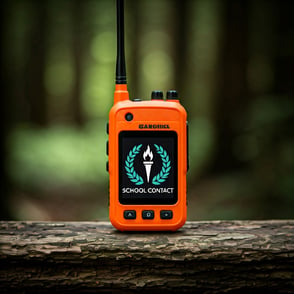
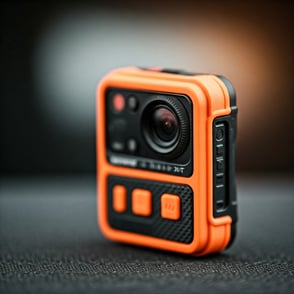
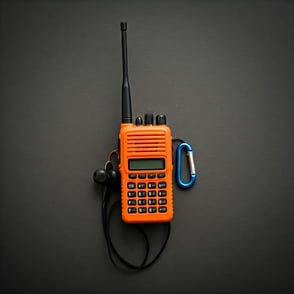
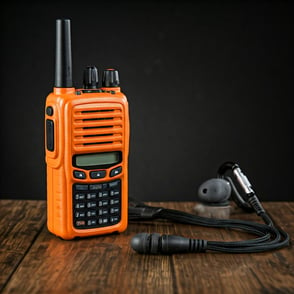
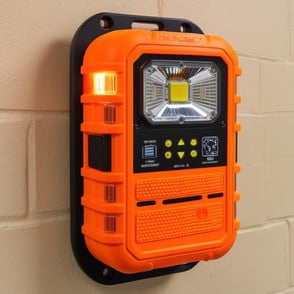
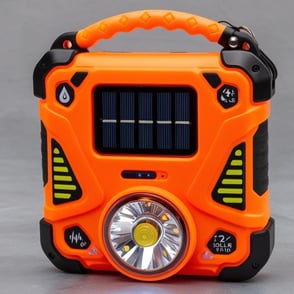
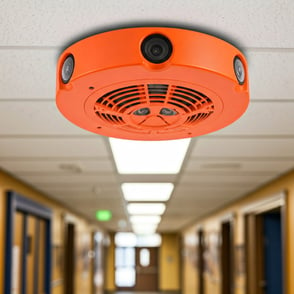
Note on Our Body-Worn Camera with Enhanced School Safety and Audit Functionality
1. Device Design
Form Factor: Compact and lightweight body-worn camera designed with durable, waterproof, and shockproof casing (IP68 rating) to withstand daily use in school environments.
Mounting: Secure clip-on mechanism adaptable to various uniform types, ensuring ease of wear for staff.
Features:
High-Visibility Indicators: LED indicators signal recording status and alerts.
Integrated Controls: Easily accessible buttons for recording, emergency activation, and communication.
2. Core Emergency and Safety Functionality
Video Recording for Safety:
Continuous Recording: Captures real-time footage to document incidents such as altercations, unauthorized entries, or emergencies, ensuring comprehensive coverage.
High-Definition Video: Provides clear visuals for accurate analysis and evidence.
Emergency Activation:
Single-Button Activation: Instantly starts recording and triggers predefined emergency protocols (e.g., lockdown, fire alarms).
Silent Alert Mode: Discreetly records sensitive situations while notifying security personnel.
Geofencing and Location Tracking:
Automated Alerts: Video recording begins automatically if the device enters or exits geofenced areas, ensuring coverage of critical zones.
Lockdown Protocols: Supports automatic activation based on location-based triggers.
Drill Mode:
Simulation Recording: Allows schools to review and assess emergency response effectiveness through recorded footage of drills.
3. Day-to-Day Monitoring and Transparency
Incident Documentation:
Conflict Recording: Captures real-time interactions between staff, students, and visitors to address disputes and ensure accountability.
Behavior Monitoring: Provides clear evidence for incidents requiring disciplinary action or parental involvement.
Internal Audit Support:
Activity Logs: Recorded footage aids in reviewing adherence to school policies and procedures.
Compliance Verification: Ensures safety protocols and staff responses align with regulatory requirements.
Visitor Assistance:
AI Voice Assistant: Supports visitors with navigation and campus-related queries while maintaining a record of their movements.
Attendance and Navigation:
QR Code/RFID Scanning: Tracks attendance with visual evidence to support records.
Turn-by-Turn Navigation: Assists visitors while capturing their movements on campus for security purposes.
4. Advanced Analytics and Connectivity
Video Data Insights:
Behavior Analysis: Provides actionable insights from recorded footage to improve safety measures and staff training.
Audit Trails: Maintains a secure record of footage for compliance reviews and investigations.
Offline Recording Capabilities:
Local Storage: Ensures uninterrupted recording even in areas with limited connectivity.
Pre-Programmed Protocols: Supports emergency activation and documentation without reliance on Wi-Fi.
Wi-Fi and Bluetooth Integration:
Cloud Sync: Automatically uploads footage for secure storage and review.
Remote Access: Allows administrators to review video recordings in real time during critical events.
Geofencing Analytics:
Zone Monitoring: Tracks movement within designated areas, highlighting potential breaches or unusual activity.
Reporting: Delivers actionable insights on geofenced activity to improve safety strategies.
5. Accessibility Features
Inclusive Design:
Braille Labels and Audio Feedback: Accommodates visually impaired users.
Tactile Controls: Ensures ease of use for all staff members.
Vibrating Alerts: Provides silent notifications, supporting users with hearing impairments.
6. Maintenance and Support
Training:
Comprehensive User Programs: Educates staff on best practices for using the device effectively.
Video Review Workshops: Enables staff to analyze recorded footage for continuous improvement.
Maintenance Plan:
Regular Updates: Includes firmware upgrades and annual maintenance checks.
24/7 Technical Support: Ensures minimal downtime for critical functions.
Warranty:
Extended Coverage: Offers a 3-year warranty for hardware and software performance.
7. Implementation Scenarios
Scenario 1: Incident Recording:
During a disciplinary situation, the device captures clear, indisputable footage to support administrative actions and improve transparency.
Scenario 2: Emergency Response Review:
The device records lockdown drills and real emergencies, allowing schools to assess response times and refine protocols.
Scenario 3: Parent and Staff Assurance:
Recorded footage provides accountability and fosters trust by demonstrating adherence to safety measures.
Scenario 4: Compliance and Audits:
Video documentation ensures regulatory compliance and supports internal reviews, protecting the school from potential liabilities.
Scenario 5: Visitor Management:
The camera records visitor interactions and movements, improving security and ensuring accountability.
This body-worn camera integrates the functionality of School Contact devices with advanced video recording features, offering unparalleled support for school safety, incident response, and internal audits. By ensuring comprehensive documentation, it empowers educational institutions to create a secure and transparent environment for students, staff, and parents.
Scenario: Emergency Activation During a School Lockdown with Ceilling Mounted School Contact Device
Date/Time: Tuesday, 10:14 AM
Location: High School
The school day was proceeding as usual when a gunshot rang out in the east hallway of Jefferson High School.
Detection and Immediate Response
Sound Detection:
The School Contact ceiling-mounted camera system instantly identifies the sound of gunfire using its advanced acoustic detection technology. The AI categorizes the noise as a firearm discharge, distinguishing it from non-threatening sounds like dropped books or loud conversations.Gun Smoke and Lidar Activation:
Sensors embedded in the cameras detect traces of gun smoke in the east hallway. Simultaneously, the lidar system pinpoints two moving individuals exhibiting suspicious behavior—one visibly armed.AI Vision Analysis:
AI vision confirms the shooter’s location, analyzes body movements, and tracks their path in real time. A second individual is flagged as a potential accomplice.
Silent but Effective Safety Protocol Activation
Visual Warning with Strobe Lights:
Instead of activating a loud alarm system that could panic students and staff, hinder police response, or provide cues to the shooter, the system employs high-visibility strobe lights embedded in the ceiling cameras.These strobe lights serve as a silent, yet unmistakable, visual warning to everyone in the hallway to take cover immediately.
The flashing lights disorient the shooter, reducing their ability to aim effectively, while ensuring students and staff in nearby areas are alerted to danger.
School Lockdown:
Alongside the strobe lights, the system initiates a school-wide lockdown by sending silent notifications to teachers and administrators through their devices. This avoids creating additional noise that could escalate the situation or hinder police response.An automated text-based alert instructs staff:
"Lockdown in progress. Secure all doors and remain silent. Await further instructions."Automated Notifications to Authorities:
The system sends an encrypted alert to the local police, bypassing delays associated with manual calls or audible alarms. This alert includes:Exact shooter location: East hallway, moving west.
Shooter trajectory and behavior, tracked by lidar and AI vision.
Real-time video feeds, lidar maps, and geotagged smoke detection data.
Real-Time Tracking and Communication
Ongoing Shooter Monitoring:
As the shooter moves, the system continues updating their position using lidar and video feeds. The AI predicts potential escape routes based on the school’s layout and provides this information to law enforcement in real time.Silent Coordination with Police:
Responding officers receive live updates and floor plans on their devices, eliminating the need for distracting sirens or radio chatter. This allows them to move tactically, undetected by the shooter.
Resolution and Aftermath
Within five minutes, police arrive, guided by precise real-time data from the School Contact system. Using the silent and strobe-light-driven strategy, officers apprehend the shooter and their accomplice near the science wing without further casualties.
After the incident, the system compiles a comprehensive report, including video evidence, lidar tracking, and response timelines, to assist with investigations and improve future protocols.
This scenario highlights the critical importance of using strobe lights for visual warnings instead of loud alarm systems. The silent response prevents panic, avoids tipping off the shooter, and ensures law enforcement can act swiftly and strategically to neutralize the threat.
Connect
Enhancing communication through innovative AI solutions.
Engage
805-669-8683
© 2024. All rights reserved.


